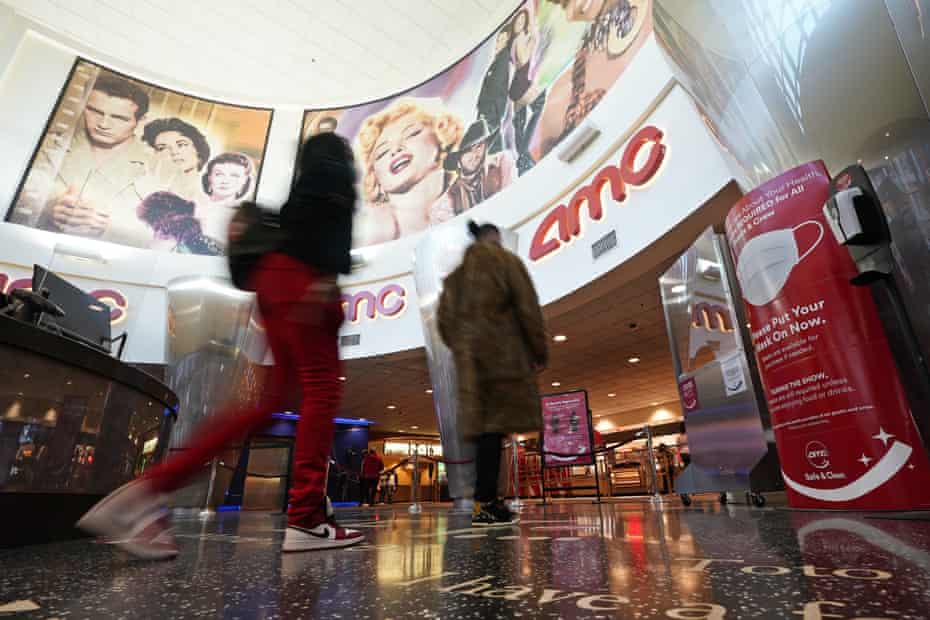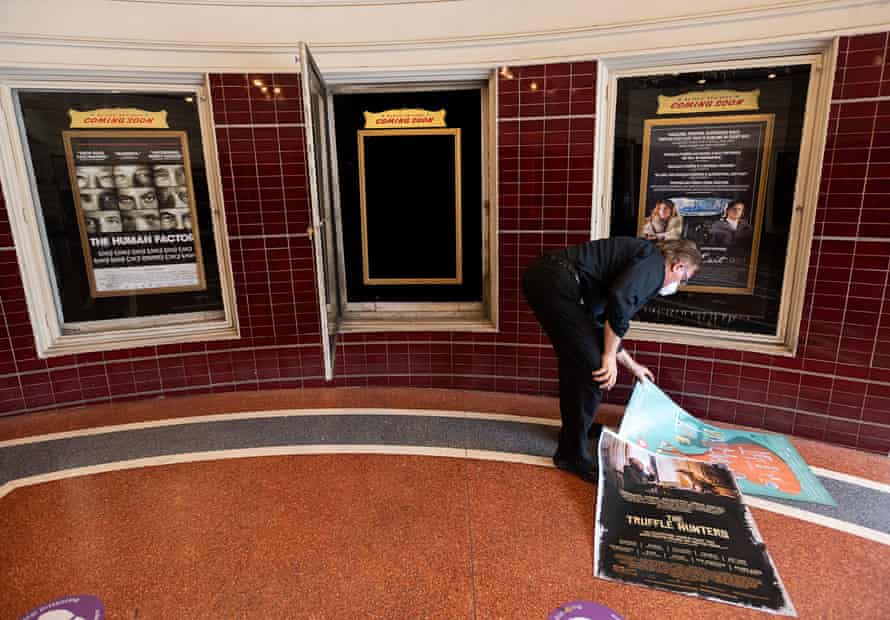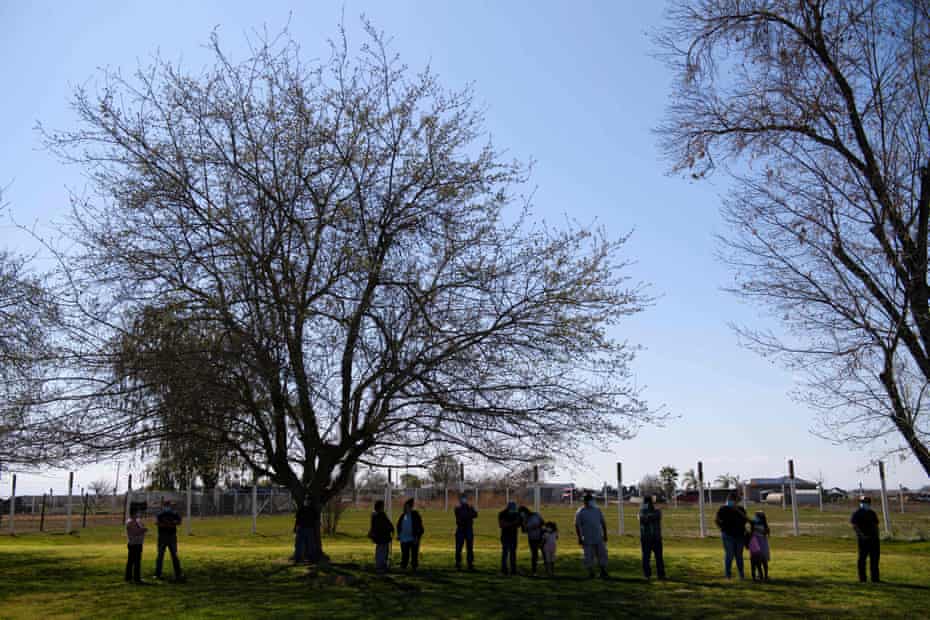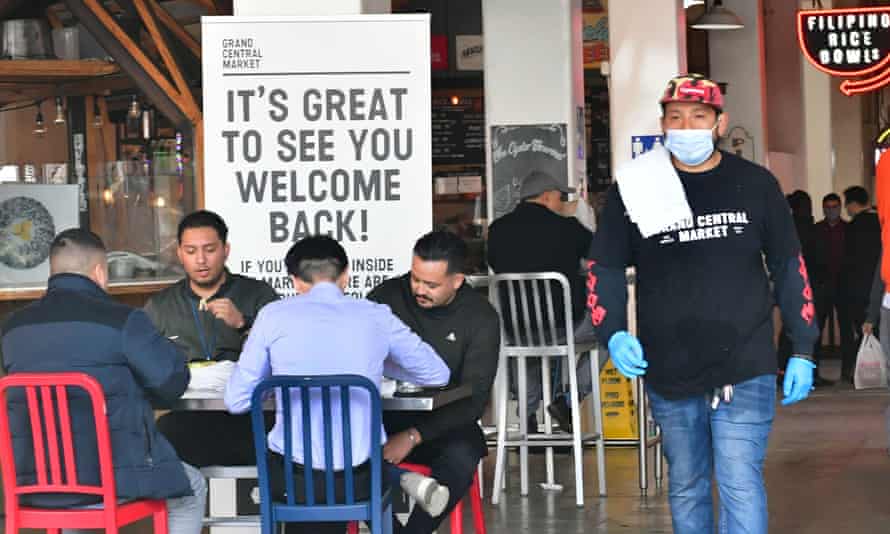For the first time in more than a year, the vast majority of Californians can dine indoors, go to the gym, catch a movie at their local theater or attend a religious service.
The mood in the state has been buoyant in recent weeks, as case numbers continue a dramatic decline and major cities lift rules that have been among the strictest and longest-lasting in the country.
In San Francisco, groups of picnickers can be spotted gathering in parks as the weather warms, residents have been able to reunite with vaccinated friends and family members and Bay Area baseball teams are preparing to play for fans in time for opening day on 1 April.
In Los Angeles, one of the hardest-hit regions in the US, museums and other cultural institutions shut for a year are poised to reopen their doors. Disneyland is getting ready to welcome residents back in April, and Hollywood is experiencing a surge in film productions over the last month, though the industry is still not back to pre-pandemic levels.


“In California, we’re not going to come crawling back. We will roar back,” Gavin Newsom, the governor, said during his State of the State address in early March. “Today, the light at the end of the tunnel is brighter than ever,” he added.
But despite the optimism, the state isn’t out of the tunnel yet. More than 56,000 Californians have been killed by the virus, with hundreds still dying each day, leaving state leaders to navigate a balancing act of encouraging the enthusiasm that will help the economy recover and enforcing limits to keep the virus at bay.
And against the backdrop of fresh lockdowns and rising case numbers in Europe, many public health advisers are encouraging states not to drop their guard.
A return to (some kind of) normal?
Since the summer, California has employed a color-coded system to designate the level of restrictions in every county, tied to the number of local cases – with purple as the most restrictive, followed by red, orange and yellow. State officials relaxed the rules this month, enabling dozens of counties to progress more quickly into a lower level of restrictions.
As of last week, 42 of California’s 58 counties qualified for the red tier, putting close to 90% of the state in eased restrictions and enabling many non-essential businesses to operate with partial capacity indoors for the first time since August. Four counties have qualified for the orange tier and 1 has even made it to yellow.
Laurie Thomas, the executive director of the Golden Gate Restaurant Association, owns and manages two San Francisco restaurants that have been severely affected by the pandemic. She says business owners are eagerly awaiting a return to near normalcy.
“We are very hopeful,” she says, adding that even after relying on personal loans to cover payroll and being forced to dramatically reduce her staff, she considers herself one of the lucky ones. Friends with establishments in San Francisco’s once bustling Financial District have been left to operate in a “ghost town” until office workers return from remote work.
San Francisco, currently in the red tier, is expected to move to the orange tier next week, which would mean churches and movie theaters could fill 50% of their seats, bars can host patrons outside, and bowling alleys, gyms can open with 25% capacity. Restaurants will shift from 25% indoor seating to 50%, and retail stores will only be limited by social distancing modifications to allow for at least 6ft of space between customers.
Thomas says her customers have been increasingly eager to eat in, especially on days when the Bay Area’s gusty, cold breezes send chills through outdoor dining parklets. But she’s still supportive of the city’s more measured approach – which has dragged even behind the state’s restrictions – if it means there’s less chance the city will slide back into lockdowns.

“Every time you close, a small restaurant like mine can lose around $10,000,” she says, adding that up to 15% of restaurants couldn’t survive the shutdowns and are gone for good. “A lot of people are champing at the bit – but we’ve got to go slowly”.
Some California residents are less patient. Political pressure is mounting on the governor to allow localities to set their own pace, and, along with navigating California’s recovery, Newsom is now fighting a recall effort that has been emboldened by some residents’ frustration with California’s heavy-handed lockdowns.
Much of the Central Valley, a conservative and rural region that stretches through the middle of California, remains in the purple tier. Covid has had a severe impact on farmworkers in the area, who have faced higher rates of transmission, and initial efforts to make vaccines more accessible got off to a slow start.
But at Harris Ranch, a hotel and restaurant in Fresno county that sits in view of the Interstate-5 Freeway, the restrictions have done little to slow business. Joaquin Juarez said the sense of statewide optimism has helped fuel stopovers at his roadside restaurant.

“We have seen a huge increase in business with the rest of the state opening up, to the point where we have to have some people wait for 30 or 40 minutes,” Juarez said. California still has limits in place on travel and public health officials have called for people to keep staying home and avoid traveling more than 120 miles out of town. But the rules are not enforced. Juarez says 85% of his patrons are drivers coming off the I-5.
The purple tier means the restaurant is restricted to outdoor dining, but the sprawling white tent in the parking lot is set up to serve 120, complete with strung-up chandeliers, high-backed chairs, and Easter decor.
“I think people are getting antsy now,” Juarez said, adding that the restaurant was making preparations for Easter to be its busiest day. By then, he hopes, the county will qualify for the red tier so the business can welcome more people and offer some seating in their dining room inside. “Once we open up, I am sure things will bounce right back and we will be back to normal,” he said. “It’s just a matter of opening the doors”.
‘Cautiously optimistic’ but concerns remain
Alongside its reopening, California is rushing to vaccinate as many people as possible, especially the communities hit hardest by the virus. So far more than 13 million doses have been administered in the state, but a recent report found that, when it comes to equitable distribution, the state ranks among the worst in the country.
“Getting the balance right between trying to prevent disease on the one hand and trying to keep to a minimum the negative impacts of measures is really hard,” said Dr Arthur Reingold, the division head of epidemiology at the University of California, Berkeley, School of Public Health. Though he’s concerned about a higher risk of hospitalization and death with fewer restrictions, “day by day we are getting to higher levels of immunity in our communities in California”, he said.
With vaccination rates rising, California has seen Covid cases drop by roughly 42% over the last two weeks.

“We are very optimistic – but cautiously optimistic,” said Dee Dee Myers, Newsom’s senior adviser who was appointed to head the state’s office of business and economic development in December. “Everyone wants to do this safely and reopen as quickly as possible without risking a backslide or putting people in unsafe conditions.”
But concerns remain that California is opening too fast, especially for those who will be on the frontlines when businesses reopen. Yanira Revolorio, a Bay Area janitor who works at a department store, said she hadn’t yet been able to get vaccinated and was still anxious about possible Covid exposure at work.

“They should be making the vaccine a lot more accessible, and make sure all essential workers are eligible,” said the 24-year-old in Spanish. She lives with her mother and avoids hugging her. “I’m always really worried about exposing her,” she said. “I think it’s much too soon to reopen because not everyone is following the Covid precautions.”
Some healthcare workers who were on the frontlines during LA’s catastrophic Covid surge in December and January also said they were worried that many workers had not yet been vaccinated.
“We cannot let our guard down or else we’re going to be right back at ground zero,” said Marcia Santini, a nurse at the University of California, Los Angeles, medical center, who was hospitalized with Covid in December. Watching Italy return to lockdown has made her fear that LA could see yet another wave of infections. “We can’t be ignorant. I know how painful this is. We came this far; we got to just stick this out until we get the majority vaccinated.”
“It can be a tricky needle to thread,” Myers, Newsom’s economic adviser, said of the efforts to remind residents of the risks while restrictions are eased. Calling the situation unfolding in Europe and elsewhere around the world “sobering”, she added that California’s success will hinge on convincing people to wear their masks, follow the sanitation protocols, and continuing testing and tracing even as cases fall.
“There’s lots more to do and a fair amount of complexity,” she said. “We want to burn the roadmap. We want to burn the blueprint as soon as we can, and never think about going back again. But we are not there yet.”
This content first appear on the guardian
